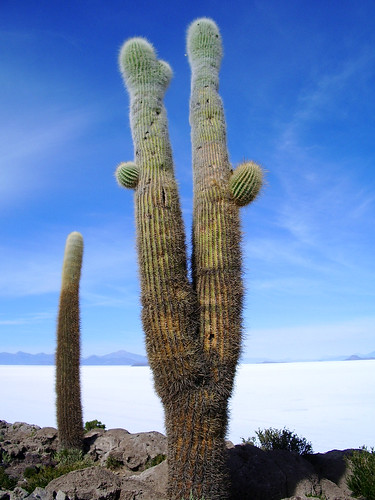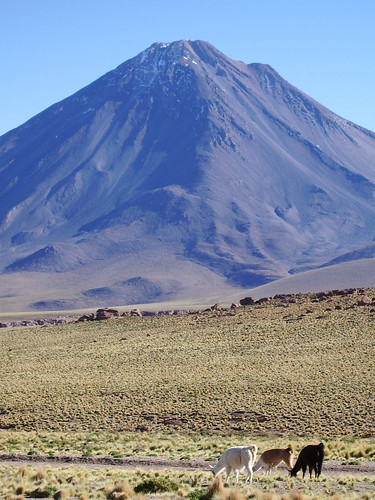See our favourite photos from our 10 months of travelling. Contains 75 pics.
It was a year ago today that we landed in our first destination, Bangkok. We spent an unbelievable 10 months travelling and returned home eight weeks ago. We've moved into a flatshare in west London, both started work again and are enjoying all the fresh veg and milk we can chuck down our throats.
We'd always planned to put together some stats but have only just got round to typing it up, so here goes (all links point to a relevant blog post or photo):
Countries visited: 11.
Blog entries posted: 73.
Combined weight of luggage on our flight home: 49 kilos.
No. of flights taken: 17.
Time spent on buses: 394 hours (or 16.4 solid days).
Buses that broke down: four. (pics of numbers one, two and three).
No. of UNESCO World Heritage Sites visited: 16.
Things stolen: pack of cards.
Things lost: two hats (Amy).
Showdowns with cockroaches: one.
Rats fought: three.
Shoes bought in Buenos Aires: nine pairs between us.
Most popular period of blog activity: June, while we were stranded in La Paz during the protests, tourists who were stuck in other Bolivian cities read our daily updates for news from the capital.
Most talked-about blog post: the Peruivian roast guinea pig dinner.
Strangest achievement: Getting our photos in the Malay Mail.
Aprox. spent each per day in Asia: £10.
Approx. spent each per day in Bolivia: £12.
Approx. spent each per day in Australia: £33.
Approx. no. of photos taken: 6,500.
Approx. no. of photos that were worth keeping: 500.
Christmas spent in: Kuala Lumpur, Malaysia, feeling out-of-place (few people there celebrate Christmas) and visiting the huge shopping centre beneath the Petronas Towers.
New Year's Eve spent in: Perth, Australia, heading to Kings Park for a great, noisy, drunk time.
Weirdest tour company that we decided to avoid: http://www.soundsnatural.co.nz/ (warning: contains naturists).
Jody's stats
Birthday spent in: Coober Pedy, Australia.
Deaths avoided: plunging to my doom in the Cameron Highlands, deadly snake-bite in the Australian outback, almost run-over in Buenos Aires (the car came so close it clipped my leg, despite me being on a pedestrian crossing).
Best food: Masaman curry (see recipe), eaten at Bee Bee restaurant, on the beach on Ko Lanta, Thailand. Trucha Rellena (stuffed trout) in Emperador restaurant, Cusco, Peru, comes a close second - posh dining for a pittance.
Worst food: Ais Kacang - Malaysia's worst dessert.
Best drink: Chica morada (purple sweetcorn juice, invented by the Incas in Peru).
Average no. of bug bites: one every three-and-a-half days.
Price of 0°C quality sleeping bag: £51.
No. of times sleeping bag used: once.
Lifespan of watch bought in Bangkok: 5 weeks, 6 days.
Amy's stats
Birthday spent in: Valparaiso, Chile.
Deaths avoided: decapitation while asleep on a Cambodian tuk-tuk, slipping off a hill to plummet into the dark jungle during a night-walk in the Amazon.
Best food: Honey Chicken, cooked by Merry Hut guesthouse owner, Noi, on Ko Lanta, Thailand.
Worst food: Stinking durian fruit in Malaysia. Actually, I hated most of the food in Malaysia: curried fish heads are not my thing either.
Best drink: Argentine wine.
Average no. of bug bites: one every 21 hours.
Our most popular photos on flickr:





Stuff we did
We've had so many great experiences that it's tough picking our favourites, but we thought we'd have a go. We especially enjoyed the weeks we spent in Sucre, Bolivia, teaching English and learning Spanish. We made lots of great friends - natives and fellow gringos alike and will always warmly remember our time there. We also enjoyed the week we spent in Ollantaytambo, exploring the beautiful, working Inca town and cooking and serving food as volunteers in a soup kitchen that served 130 school kids, daily.
We both agree that South America made our trip. Asia was great and we plan to return to see Vietnam and Laos, but having the luxury of five months in South America was incredible and we're sure to return one day to once again see all the friends we made.
- Jody's best experiences:
- Watching the sun climb the mountains of the Sacred Valley, shooting beams of light onto Machu Picchu.
- Touching down in a tiny plane in the Amazon, before spending six days in the jungle and pampas,
- Exploring the lesser-visted temples of Angkor Wat, Cambodia, at sunrise - it felt as if we were the first people to walk through the overgrown structures in centuries.
- Being caught in La Paz for two weeks while the country was on the brink of civil war - terrifying at times, but an unforgettable experience that brought us closer to the locals than we would have otherwise become,
- Wading among sharks in Coral Bay, Australia.
- Eating the delicious street food of Bankok, Thailand.
- Wolfing down a perfect platter of meat from the Mercado del Puerto, Uruguay.
- The indescribably beautiful sights of the Tongariro Crossing hike.
- Jody's worst experiences:
- Sydney - beautiful, but dull.
- Ayres Rock / Uluru - not that big; not that red.
- Whale watching in New Zealand - shy whales, foggy weather, huge price tag. Turn 'em into soap (joke!).
- Amy's best experiences
- Eating pad thai for breakfast on the beach in Ko Phi-Phi.
- Sleeping beneath a perfect set of southern stars in the Australian outback.
- Getting drunk on wine ice-cream in Cafayate, Argentina.
- Aerial views of New Zealand, both from a Helicopter flying over the Fox Glacier and while falling to Earth from a plane while parachuting over Lake Taupo.
- Sloth-spotting in the Amazon basin.
- Exploring ancient ruins at Batan Grande, Peru, where we had to get special permission to view the archaeological site.
- Sitting awe-struck for hours, attempting to burn the image of Machu Picchu into my mind forever.
- Seeing lots of animals in the wild, such as capybaras, aligators, kangaroos, seals, echidnas, and lots of monkeys.
- Discovering foul-sounding food that was actually quite nice, such as grubs in Thailand and black pudding and 'morlecas' (heart glands) in Argentina.
- Making friends with so many people, both locals (hello Jen and Frank, Lily and family, Gael, Delia, Consuelo, Zulma and the other teachers at Fox, Samuel, Leo, Lourdes and Vero) and other travellers (hi to Kate, Ruth and Alex, Roberto and Cyndi, Daniela, Kaleb and Kalpna, Simon and Cathryn, Liron, Ella, Rod, Sara, Tomas, Meta, Kazumi and Rie).
- Amy's worst experiences:
- Sleazy, fat men in Malaysia.
- Two horrific bouts of altitude sickness.
- Missing the Nazca Lines, Peru, because the bus failed to drop us off.
- Not being able to see for flies, at the Devil's Marbles, Australia.
- Milford Sound: one of New Zealand's most beautiful fjords. We spent £115 to visit it... and it was shrouded in thick fog.
So that really is it: our final blog post. I hope you enjoyed keeping up with our trip. We had the time of our lives.
Jody and Amy
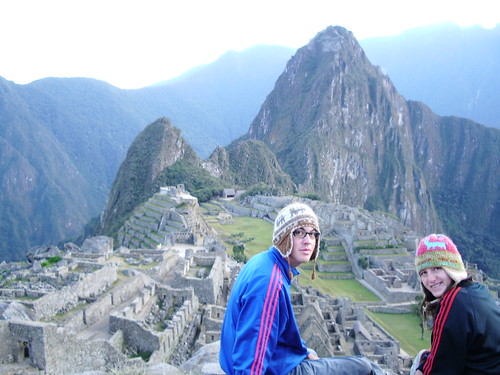
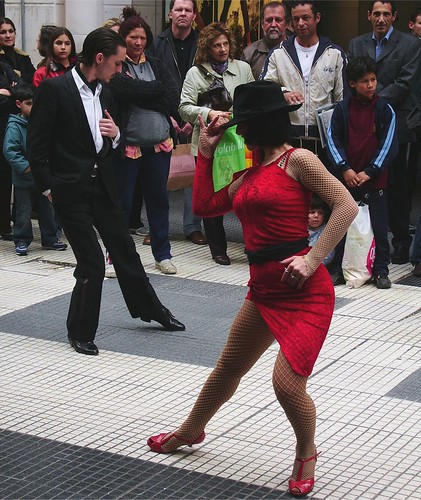
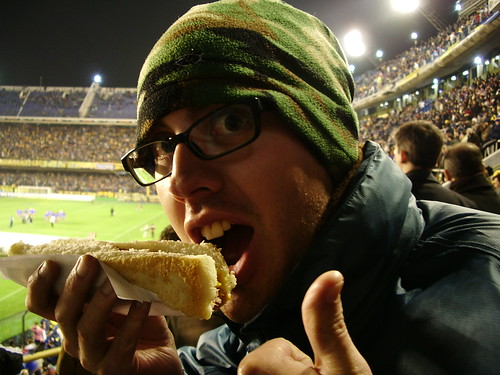 Jody loves his pancho
Jody loves his pancho
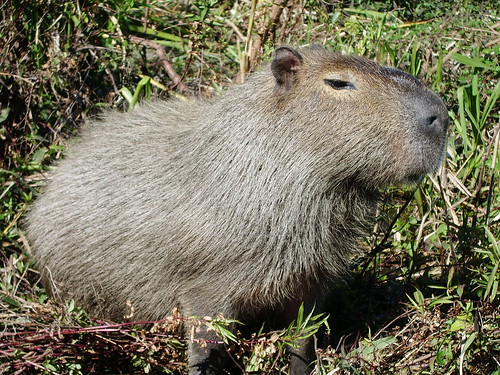 Capybara - world's biggest rodent (FACT!)
Capybara - world's biggest rodent (FACT!)
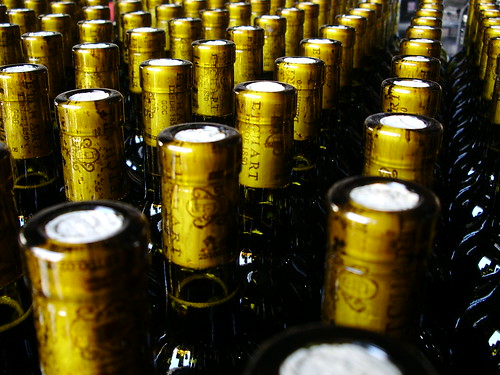
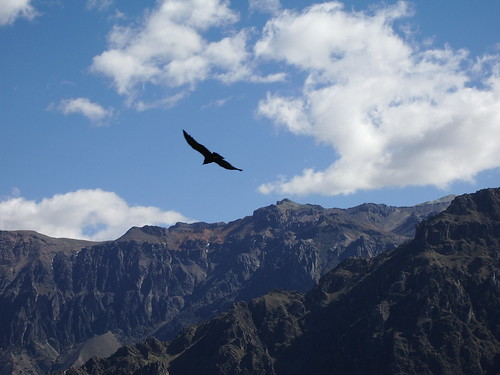 Bloody great condor in the Colca Canyon
Bloody great condor in the Colca Canyon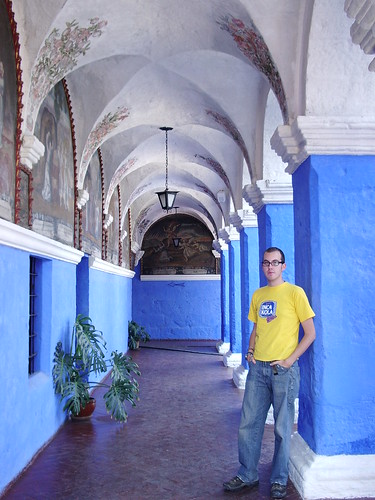
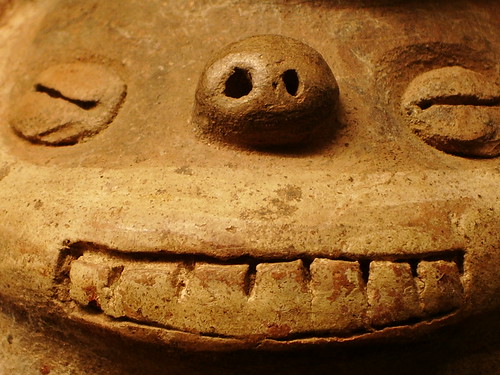 Cheeky Moche pot
Cheeky Moche pot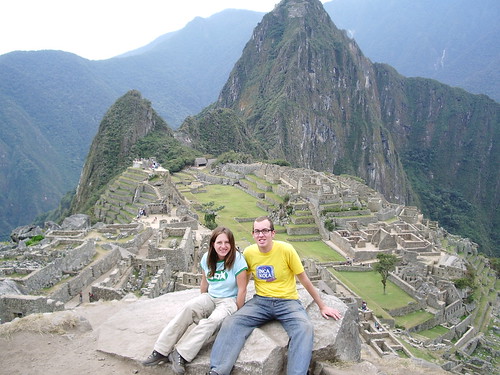 Us! On a rock! At Machu Picchu!
Us! On a rock! At Machu Picchu!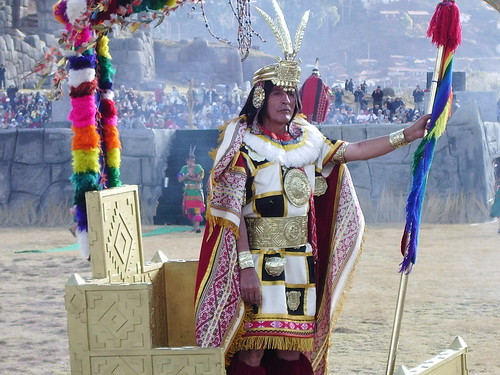 All hail the Inca King
All hail the Inca King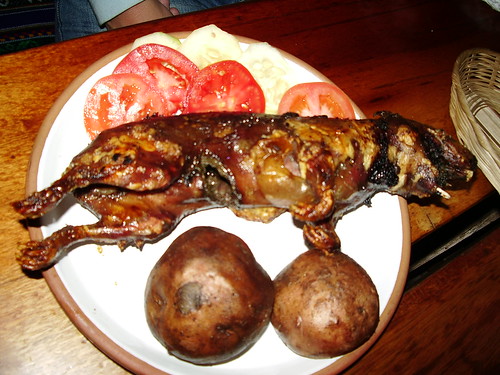 "What's for dinner, mum?" "Fluffy, son."
"What's for dinner, mum?" "Fluffy, son."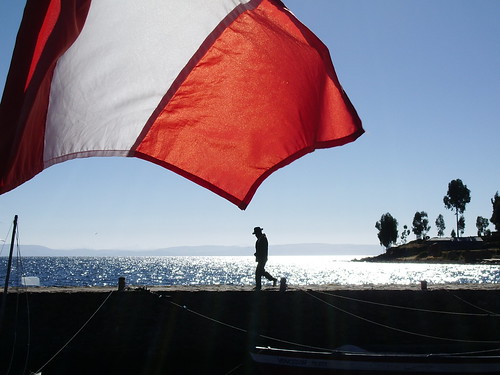 Watch out for the giant flag
Watch out for the giant flag I told you not to wear that to class
I told you not to wear that to class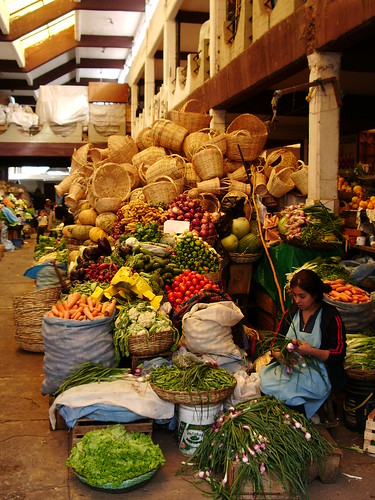
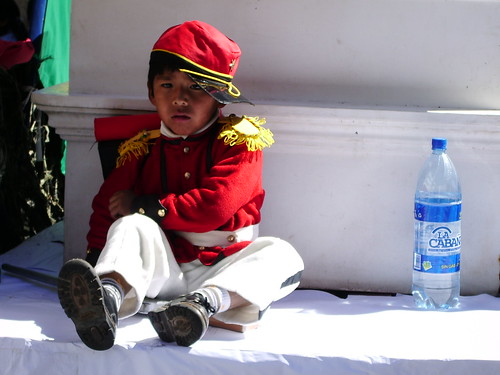 Military enrolement starts early in Bolivia
Military enrolement starts early in Bolivia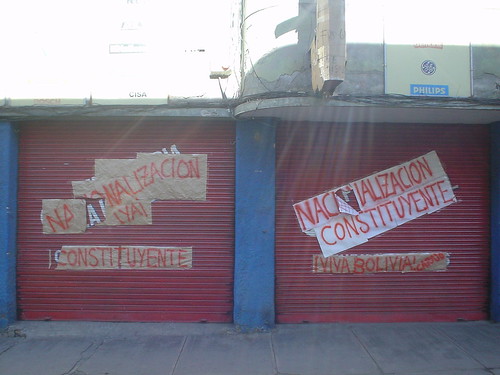 The message is clear
The message is clear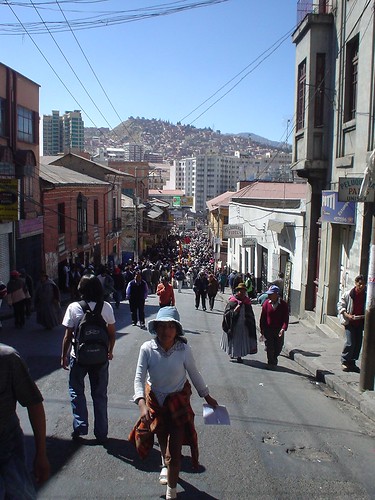
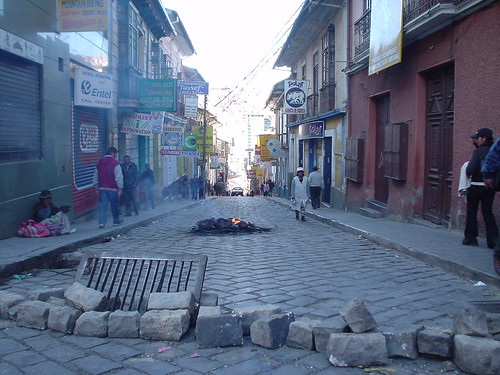 Small blockade on gringo alley
Small blockade on gringo alley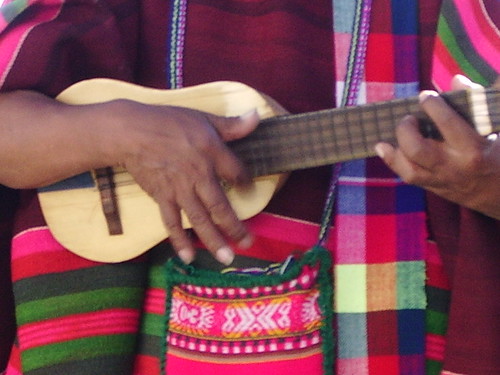 Small guitar, loud clothes
Small guitar, loud clothes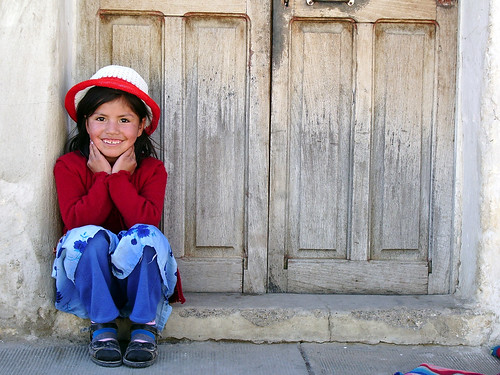 Cheeky girl at Tarabuco
Cheeky girl at Tarabuco
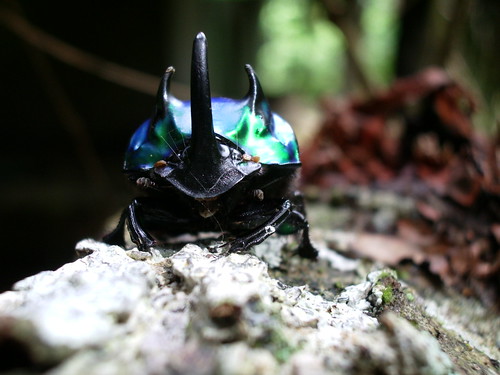 Scarab beetle
Scarab beetle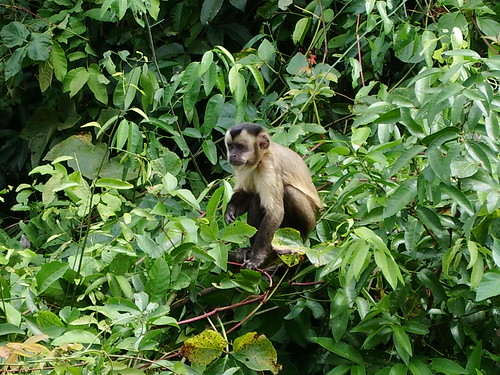 Squirrel Monkey!
Squirrel Monkey!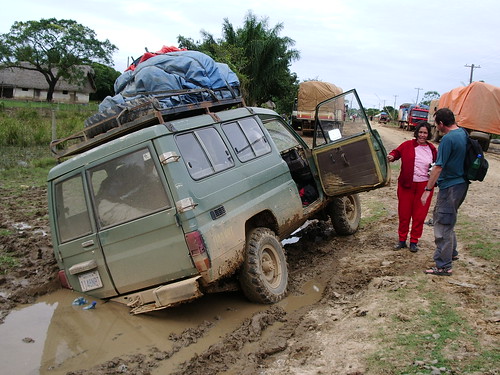 Stuck in da mud
Stuck in da mud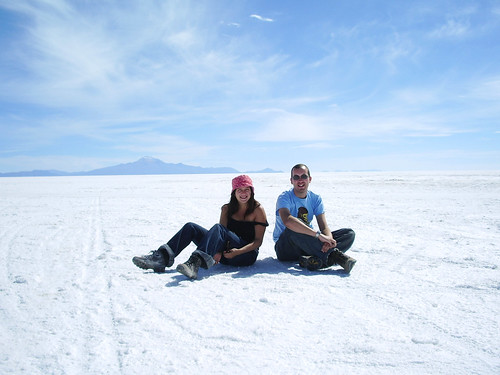 Us on the salt plain
Us on the salt plain